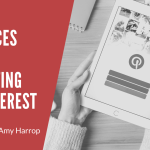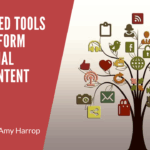 In the world of social media marketing, Facebook, Twitter and Instagram get a lot of attention. That said, anybody who has printables or print on demand products to sell would be remiss if they didn’t use Pinterest for marketing.
In the world of social media marketing, Facebook, Twitter and Instagram get a lot of attention. That said, anybody who has printables or print on demand products to sell would be remiss if they didn’t use Pinterest for marketing.
As of 2020, Pinterest has 335 million active users and for 48%, shopping is a top priority. Add that to the fact that 97% of all Pinterest searches are unbranded and you can see that there is a huge market of people who are open to products like yours.
The key, of course, is making it easy for them to find your content. The way to do that is with effective optimization of both your Pinterest profile and your content to attract new customers.
How to Optimize Your Pinterest Profile
While the majority of searches on Pinterest are visual, you still need to assume that some users will search for your brand by name. When they do, the first thing they’ll see is your profile, which needs to be properly optimized.
A lot of the rules that apply to Pinterest profile optimization are the same as for other social media profiles. You’ll need:
- A Pinterest business account. If you don’t already have one, you can either convert your personal account to a business account or create a new business account for marketing your products.
- A compelling profile picture. Ideally, you should use a picture of yourself if you’re creating a personal brand. I like to use the same profile picture across all social media accounts for consistency.
- A punchy bio. You only have 160 characters for your Pinterest bio, so make every word count.
- Relevant business info. This might include the URL of your website or Etsy shop.
Keep in mind that using your most important keywords in your bio can help people find you. For example, if you create worksheets and flashcards for students, you may want to use “educational printables” as a keyword. You could add grades or ages if your business is specialized.
Links Pins to Your Website or Shop
One of the key ways to optimize your Pinterest content is to include a URL for your website or Etsy shop with every Pin. This is a quick and easy way to boost your brand’s visibility and make it easy for potential customers to buy your products.
To claim other sites or shops, follow these steps:
- Under your profile picture, click Settings.
- With your settings open, click the Claim button on the left-hand side.
- Choose the link you want to create. You have the option of linking your website, Etsy shop, Instagram account, or YouTube channel.
After you claim your shop, you can share content to Pinterest directly from your Etsy shop.
Rearrange Your Boards
Each Pinterest board you create is an opportunity to highlight and sell your products. That said, if you’re not giving any thought to the order of your boards as they appear on your profile, then you’re probably missing out on some customers.
The easiest example involves seasonal products. A lot of people who sell printables sell items that are linked to specific seasons and holidays. For example, you might sell printable Valentines, Easter decorations, and Christmas cards.
As each season approaches, you should rearrange your boards to highlight the ones that are most relevant for the season. That way, any potential customers who visit your profile will see your seasonal offerings right at the top — which optimizes their experience and increases the likelihood that they’ll buy from you.
Highlight Your Bestsellers
We all have products that are perennially popular. When you set up Pinterest boards around a theme, you should choose one of your bestsellers to use as the cover image. That way, new visitors to your Pinterest page will see why people buy from you — and may even be inspired to buy the product for themselves.
If you’re just starting out, make your best guess and choose the image you think will be most compelling to your potential customers. You may want to test images to see which one gets the best response.
Use Hashtags Wisely
Pinterest functions as a search engine as much as it does a social site, and that means every Pin you post has the potential to help attract new traffic both to the post itself and to your website or shop.
You can help potential customers find your Pins by using the right hashtags. Pinterest allows users to add up to 20 hashtags to each Pin. That’s too many to be truly useful, so here’s what I suggest.
- Choose one or two keyword-rich hashtags per Pin.
- Upload multiple views of each product and use different hashtags on each.
- When it’s relevant, piggyback on community hashtags to get more traffic.
- Stay away from very long hashtags that are difficult to read
It may be helpful to use the same hashtags on Pinterest that you use in your Etsy listings or on your website. You can also search for products like yours on Pinterest and use the search suggestions as keywords.
Optimize Your Images
While you can upload any image to Pinterest, some proper formatting will help your Pins stand out and look their best.
Horizontal pictures tend to look better than vertical ones. You may need to play around with cropping and aspect ratios to get your products to stand out.
Pinterest recommends a 2:3 aspect ratio with a minimum width of 600 pixels. If you’re not sure where to start, Canva — one of my favorite content creation tools — has a free template for Pinterest pins.
Create Rich Pins
Finally, I highly recommend creating Rich pins to optimize your content on Pinterest. A rich pin contains snippets of HTML code from your website. If your website changes, the Pin will be automatically updated.
Rich pins are available for every Pinterest user. You can find information on how to use them here.
Conclusion
Pinterest is in many ways the ideal place to market your printable and POD products. Optimizing your content will give you the best chance of connecting with your target audience and increasing your sales.
Do you need help increasing your profits? Click here to learn how you can work one-on-one with me!



